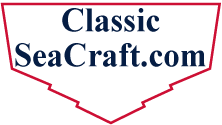
 |
|
|
|
#1
|
|||
|
|||
|
Quote:
I takes a good hand to keep up with the pulser. On mishap and your trying to catch back up. Looks really good judging by the one pic. I like to use pulse on some things and have used it at .7pps going down outside corners like that. Really makes a consistent looking weld. I have got used to having a momentary switch on my ck 20 water cooled rig now and can pulse manually as needed with the button. Doing stuff where it is hard to keep up with a foot petal the micro switch really shines. My father dose anodized T-tops and tuna towers and I learned from him so I guess that's where I picked up on that as most of them guys manually pulse. I can say one thing I really like that has helped me is the amplitude settings. The dynasty 210/280 has them like the 350/400 if you pay the extra $500 for the SD card add on. I have been running higher EP around 180a and 150a EN on advanced square wave and was able to turn my balance up to 80-85% and still get a good cleaning action. The miller manual suggest running higher EN for more penetration but I have found if I do the opposite I can use less cleaning on the balance control and keep the heat out of my tungsten. I also run 120hz on the thinner materials (1/8") but stay at 80hz for just about everything else over that thickness. Now if I was doing a thick casting, then I may go lower turning it down to 50hz and use 25% helium 75% argon mix. The helium really helps and makes the 280 feel like a much bigger machine. It acts almost like a 350 on stright argon. Sometimes I even use the 25% helium mix on thinner stuff as well. I can cut the amps back by 30% and it still welds hot. Something about it really helps clean the puddle up and gives you a nice clean looking weld. I used to have a HTP 200 and you just about had to run mixed gas to do 1/4" material with it do to running out of amperage. It would do good with your 210 in the field if on a 120v extension cord and you could get a small 80cf bottle of 25%he to carry remotely. The newer inverter machines have so many settings it is amazing what you can do with them. I also have a Lincoln tig 300/300 (375 amp) HF machine. There is no balance no frequency controls just basic 60 hz but you can really throw the heat on thicker materials. It dose a good job and is a tank at 800lbs. The more I play with the bells and whistles of the new dynasty's the more I like them though.
__________________
Current SeaCraft projects: 68 27' SeaCraft Race boat 71 20' SeaCraft CC sf 73 23' SeaCraft CC sf 74 20' SeaCraft Sceptre 74 20' SeaCraft CC sf |
|
#2
|
|||
|
|||
|
Quote:
|
|
#3
|
|||
|
|||
|
Quote:
That's how I started when I learned the anodized pipe welding. Cope out a bunch of pieces or use scraps and weld'em up. After a few you will get the hand of it. The fit up doesn't have to be perfect like a chromolly chassis or roll cage dose. Long as its close it welds up fairly good. I am not the best at it nor do I do it every day but a little practice and you will be able to do a top no problem. Biggest thing is there's no room for error. If you arc a section, your cutting it out and replacing it. There is no fixing it once you arc a piece and small mistakes can set you back big time.
__________________
Current SeaCraft projects: 68 27' SeaCraft Race boat 71 20' SeaCraft CC sf 73 23' SeaCraft CC sf 74 20' SeaCraft Sceptre 74 20' SeaCraft CC sf |
 |
|
|